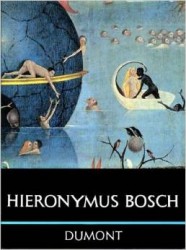
Linfert 1970
Hieronymus Bosch (Carl Linfert) 1970
[DuMont Schauberg, Cologne, 1970, 136 pages]
[English translation: Carl Linfert, Bosch, Harry N. Abrams, New York, 1972, 136 pages]
[Also mentioned in Gibson 1983: 8-9 (A37)]
Linfert’s approach of Bosch is a traditional one: Bosch is a moralist who has to be placed in the context of the lay communities that preceded the Reformation. Linfert also stresses the fact that Bosch introduced a number of important innovations but was still strongly influenced by tradition (although he often adapted it according to his own needs).
For Linfert a study of Bosch’s style is a standard for drawing up a ‘fairly reliable’ chronology of his oeuvre: Bosch’s style developped from a certain monotonous flatness into a virtuoso juggling with colours and a serene form of workmanship where all effort is concealed.
When dealing with Bosch’s subject matter Linfert’s methodological approach is close to what could be called multi-interpretability, sometimes even non-interpretability (no interpretation is possible). Bosch used a cryptic language, piling riddle upon riddle, but whose basic meaning, once decoded, proves clear as glass. Unfortunately, Linfert does not deliver a reliable method to actually decode the riddles and he jumps from one theory to another, sometimes concluding that they are all correct (as for example with the ‘buildings’ in the central panel of the Garden of Delights triptych, which refer to alchemy according to Combe and to sexuality according to Tolnay). Every once in a while, for example when he writes about the overall meaning of the Garden of Delights, Linfert admits that we will probably never understand the true meaning: here, Bosch paints in a language that cannot be translated.
[explicit]